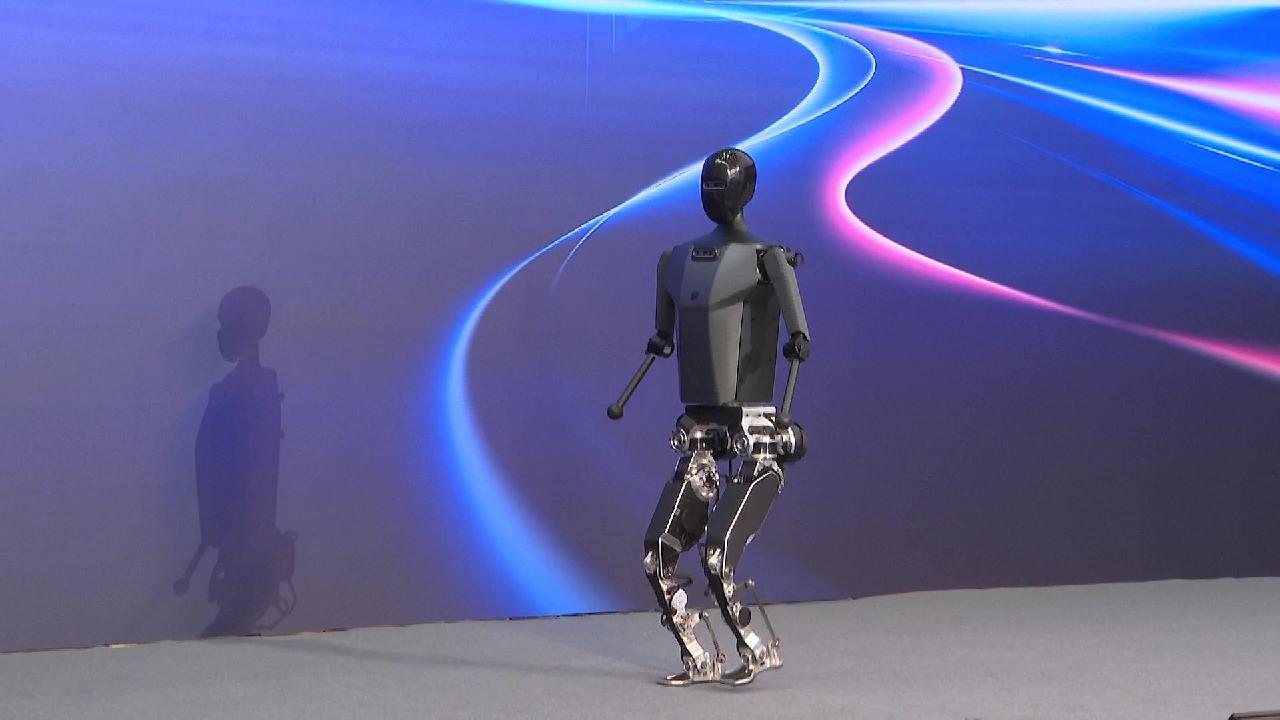Humanoid Robots Assisting in China's Innovation-Focused Endeavor
China's human-like machines are emerging as key players in the nation's innovation-driven growth engines, referred to as new quality productive forces. These advanced technologies are showcasing their capabilities to accelerate long-term growth.

In the early morning light of E-Town in southeastern Beijing, an intriguing sight emerges. Figures that appear youthful and vigorous, mimicking human movements with precision - jogging and performing tai chi - are not elderly residents but rather humanoid robots.
In the vanguard of this nascent yet increasingly influential industry is Tien Kung, a sleek, black humanoid robot, developed by the Beijing Embodied Artificial Intelligence Robotics Innovation Center, also known as HUMANOID. Officially launched late last year, the center achieved a significant milestone with Tien Kung’s unveiling this April.
Tien Kung stands 1.63 meters tall and weighs 43 kilograms. It boasts the ability to run at a continuous speed of 6 kilometers per hour, marking the first time a fully electric, full-size humanoid robot has achieved such a feat.
"It's a stride indeed in terms of technological progress," remarked Rick Xiong, general manager of the center and a seasoned professional with more than 20 years in the industry.
The field of humanoid robotics integrates advanced technologies such as AI and robotics, forming a cutting-edge industry that is attracting global attention and investments. Xiong predicts that this sector has the potential to grow into a trillion-U.S. dollar industry, profoundly impacting our daily lives and work environments. "Impossible? It's already a reality in the making."
In practical applications, humanoid robots are beginning to transition from research labs and demonstrations to actual workplace settings. For example, UBTECH, a major player in the industry located near HUMANOID, has recently started implementing its robotic solutions in a smart automobile manufacturing facility in eastern China to aid in transporting auto parts.
According to an industrial report compiled by UBTECH and its partners, the market for humanoid robots in China is poised to hit around 2.76 billion yuan (approximately $387 million) in 2024 and could soar to 75 billion yuan by 2029, capturing about a third of the worldwide market. Projections suggest that by 2035, the market could burgeon to 300 billion yuan.
"There are combined efforts to shape the future in our favor," noted Xiong. "We have the right timing, place and people to accelerate the humanoid robotics push."
Xiong, however, warns against hasty investments without strategic considerations, as the industry, though promising, is still in its infancy. Major Chinese cities like Shanghai, Shenzhen, and Wuhan are following suit, establishing centers and alliances to further enhance the capabilities of humanoid robotics. These developments highlight both the opportunities and the challenges faced by emerging and established players alike.
"Technology is the major bottleneck checking the industry's development," Xiong added. "It takes time, money, and most importantly teamwork to make real technological breakthroughs."
To further support industry-wide collaboration and innovation, HUMANOID plans to introduce a versatile platform for embodied intelligence later this year, which will be accessible to both domestic and international firms.
The upcoming World Robot Conference in E-Town will be a focal point for HUMANOID, drawing global industry leaders to discuss and display the latest developments. Xiong looks forward to the event as an opportunity for fruitful collaboration: "We are always open to global industrial cooperation," he stated. "Together, we can make the unreal real."As the humanoid robotics sector continues to evolve, several trends are emerging that are likely to shape its future trajectory. Innovations in artificial intelligence are fundamentally driving the capabilities of humanoid robots, enabling them to perform increasingly complex tasks with adaptability and precision. The integration of advanced machine learning algorithms allows these robots to learn from their environments and improve their performance over time, positioning them as valuable assets in various industries.
In sectors such as healthcare, humanoid robots have the potential to revolutionize patient care. For instance, they could assist nurses with routine tasks, monitor patients, and even provide companionship to those in long-term care facilities. By alleviating some of the workload on human caregivers, these robots could enhance the efficiency of healthcare services while improving the quality of care.
Moreover, the manufacturing industry stands to gain tremendously from the deployment of humanoid robots. As production processes become increasingly automated, humanoid robots may be utilized for tasks that require dexterity and problem-solving abilities, such as assembly and quality control. Their ability to navigate dynamic environments and collaborate with human workers will further streamline operations and improve productivity.
Additionally, the entertainment and education sectors are exploring the potential of humanoid robots. From interactive learning assistants in classrooms to performers in theatrical productions, these machines can engage audiences in novel ways. The ability of humanoid robots to mimic human emotions and social interactions makes them ideal candidates for roles that require engagement and connection, providing enrichment in both educational and entertainment contexts.
The international landscape for humanoid robotics is also becoming more collaborative. With countries around the world investing in AI and robotics technology, global partnerships are forming to advance research and development. These collaborations include knowledge sharing, joint ventures, and participation in international conferences, all aimed at fostering innovation and enhancing the capabilities of humanoid robots.
To fully realize the potential of humanoid robotics, challenges must be addressed, including ethical issues surrounding their deployment. Concerns about job displacement, privacy, and security need to be managed proactively as humanoid robots become more integrated into everyday life. Industry leaders, including Xiong, acknowledge the importance of establishing ethical guidelines and regulatory frameworks that can keep pace with technological advancements.
As the sector progresses, an emphasis on interdisciplinary approaches will be crucial. By combining insights from various fields—such as robotics, psychology, sociology, and engineering—new pathways for innovation can be uncovered. This kind of holistic thinking will facilitate the creation of robots that not only perform tasks but also understand and respond to human emotions and needs.
Looking ahead, the next phase for HUMANOID and the broader humanoid robotics industry will involve continued investment in research and development, as well as efforts to scale production capabilities. The company’s commitment to innovation and collaboration seeks to position it as a leader in a rapidly evolving space with vast potential.
As these machines become more sophisticated and integrated into various aspects of society, the collaboration between human and robot will redefine traditional roles and lead to a new era of technological synergy. The journey from concept to wide-scale application is just beginning, and the future appears bright for the field of humanoid robotics in China and beyond.
With major industry events on the calendar and increasing attention from both local and international markets, the momentum behind humanoid robots is undeniable. The next few years will be pivotal, not only for HUMANOID but for the entire robotics ecosystem as it strives to make the unreal a part of everyday life.
Anna Muller for TROIB News
Discover more Science and Technology news updates in TROIB Sci-Tech












